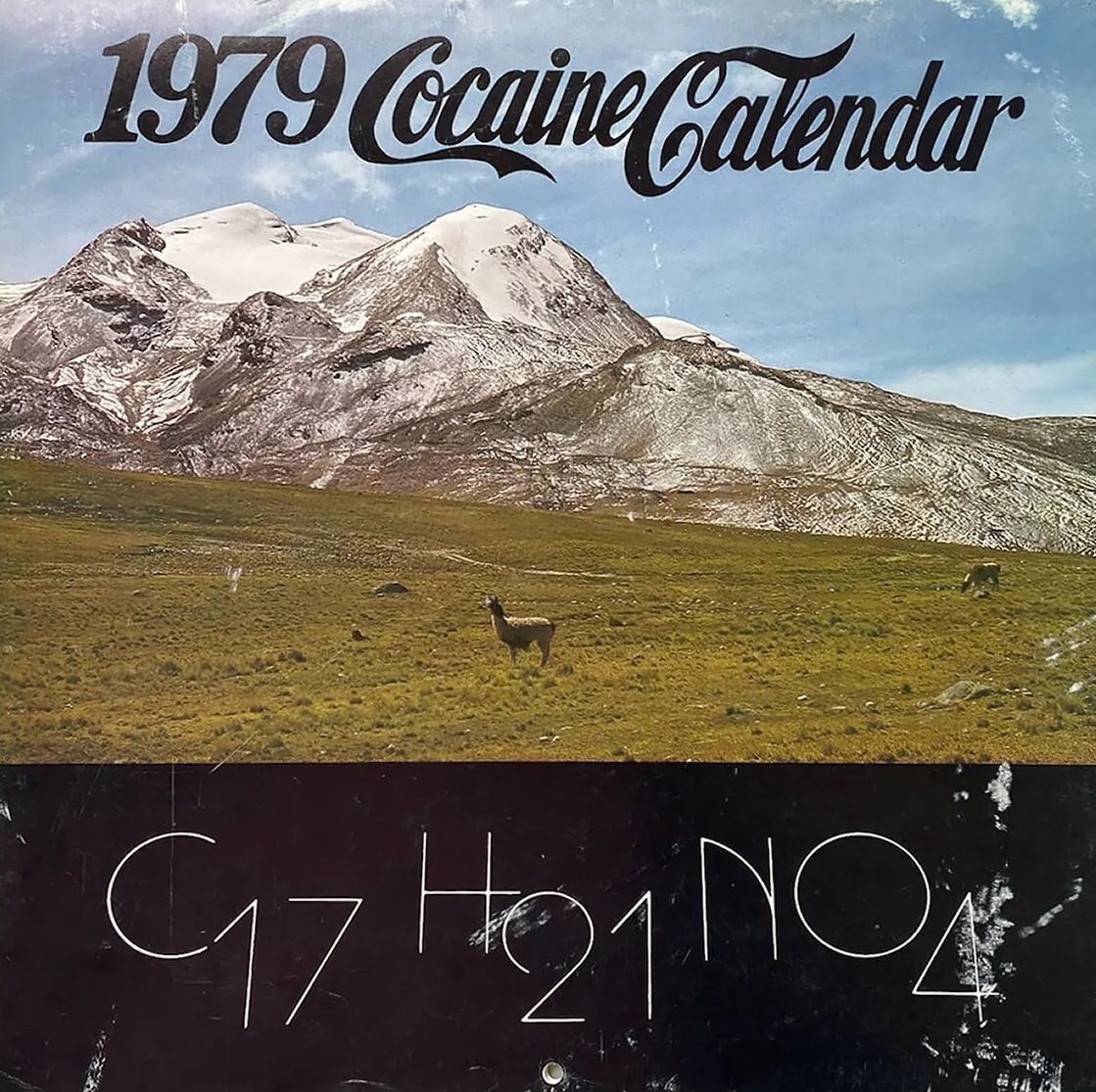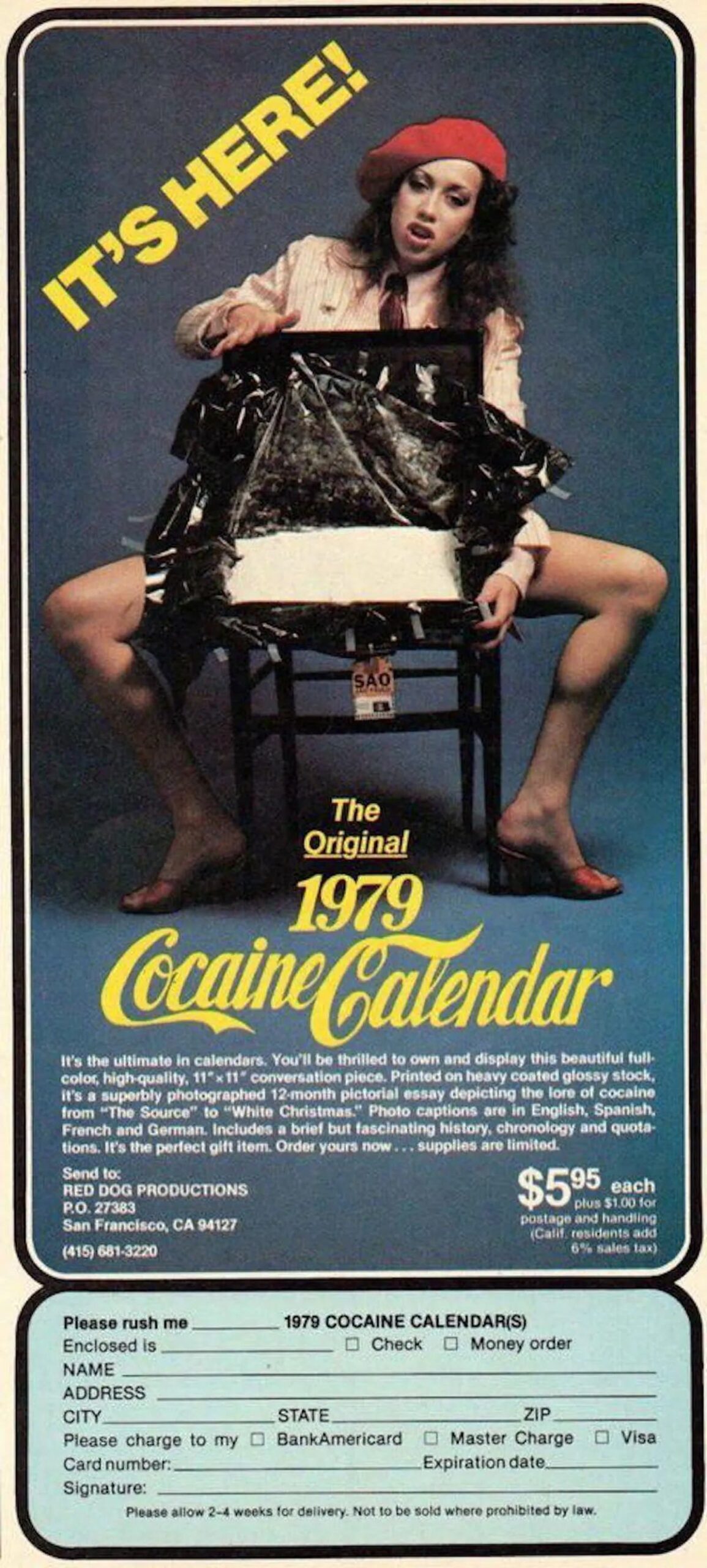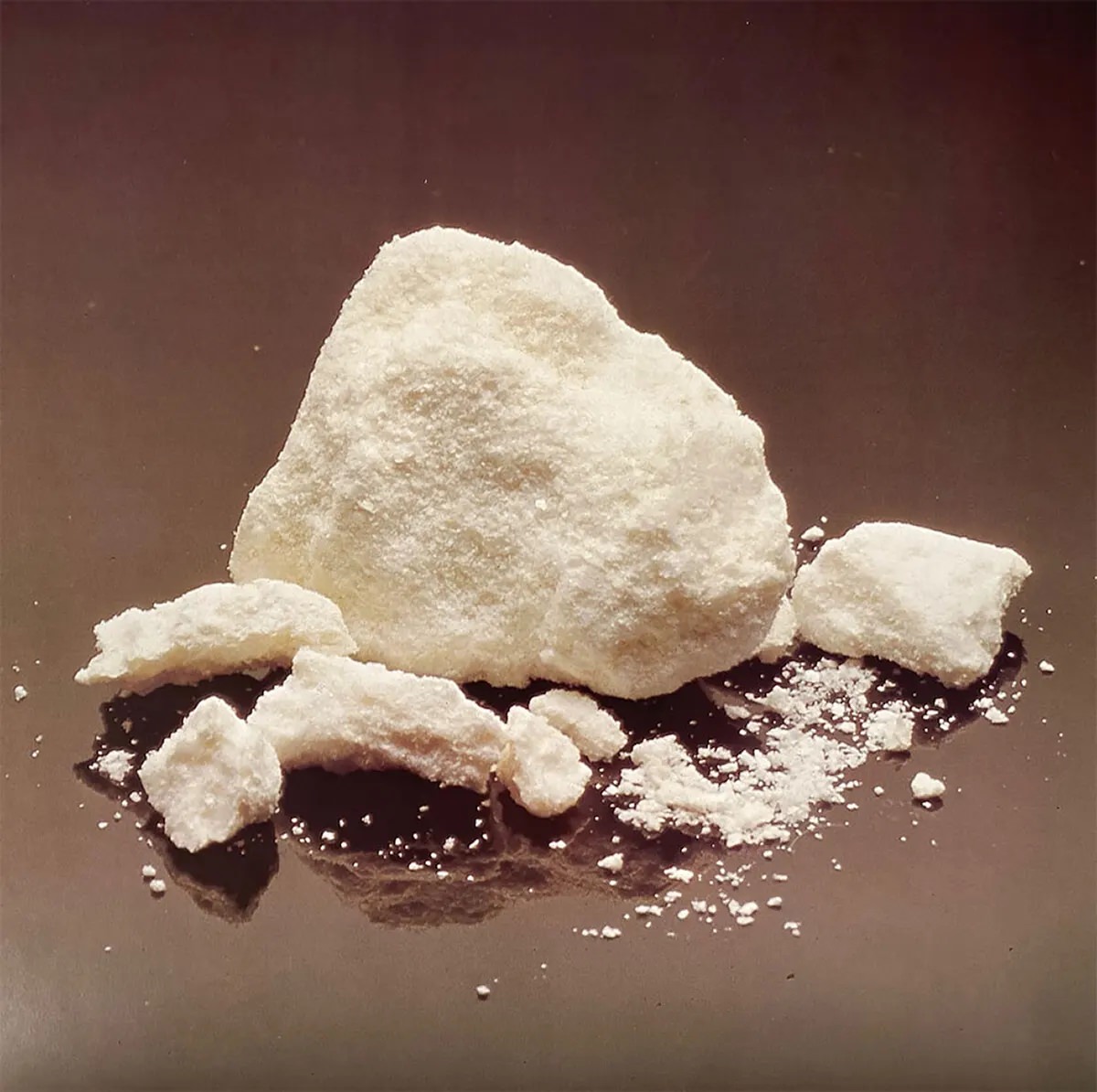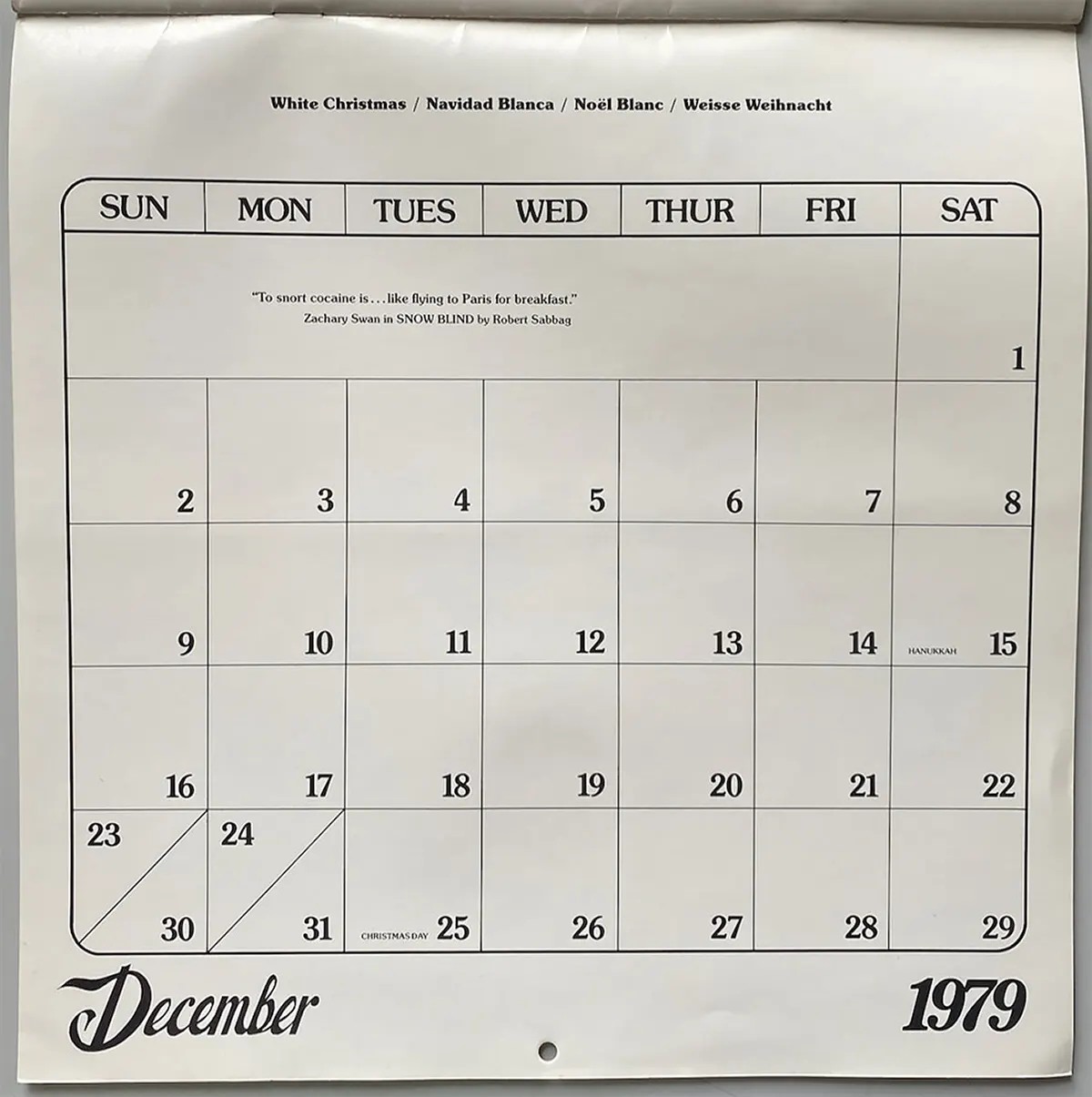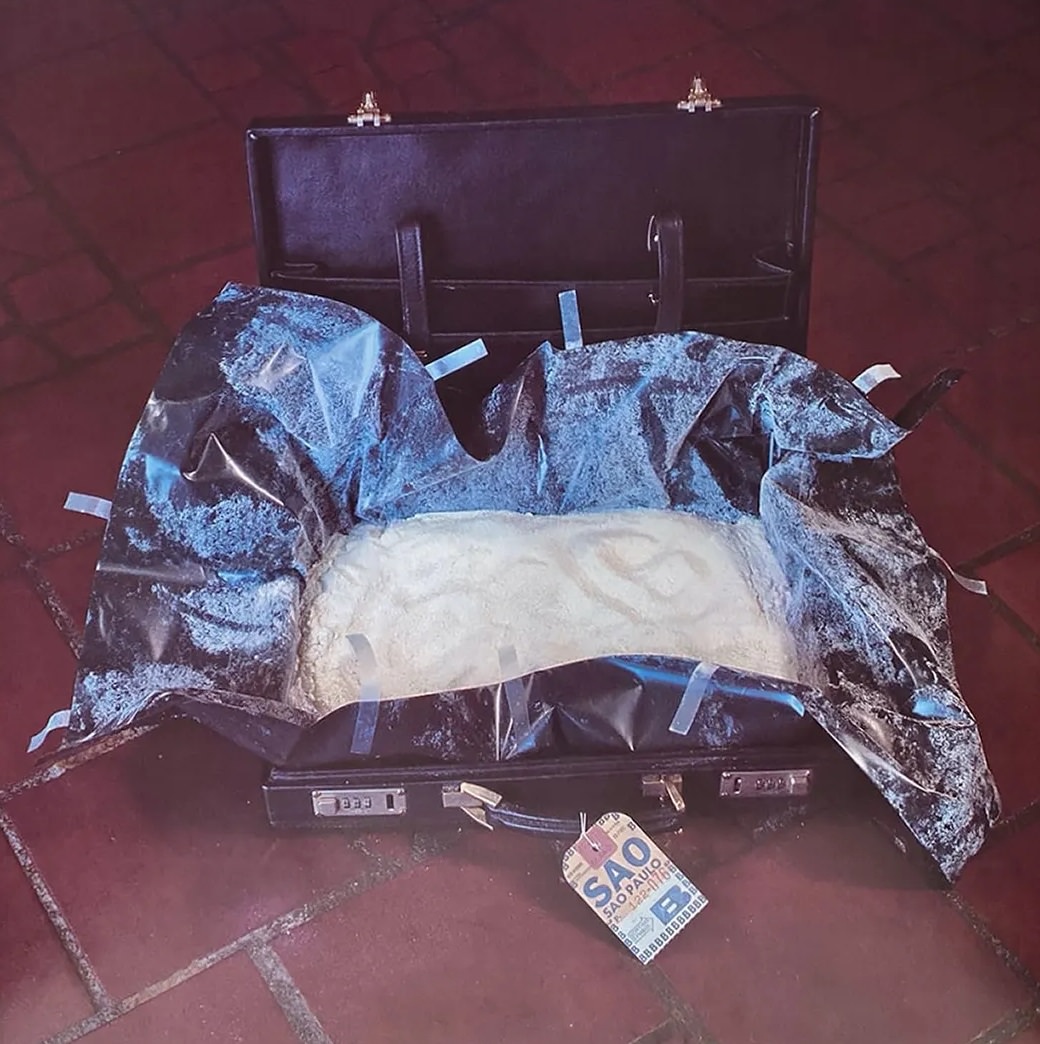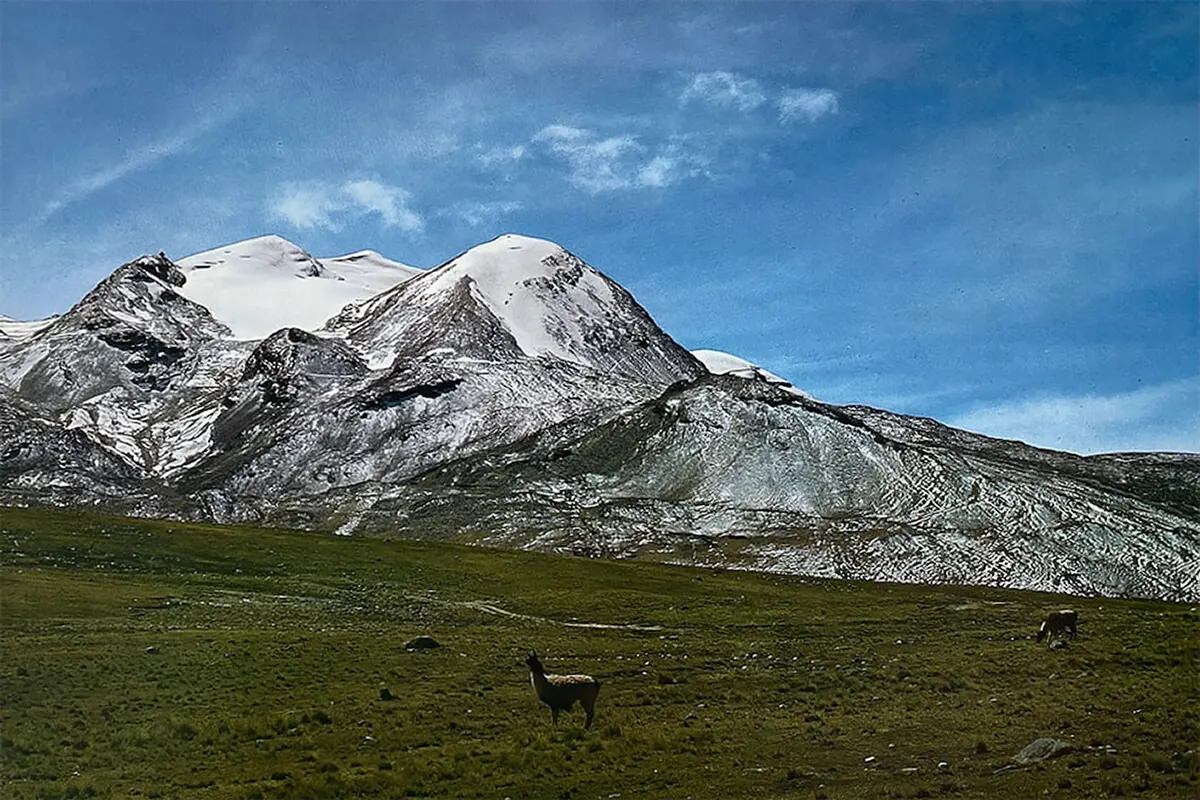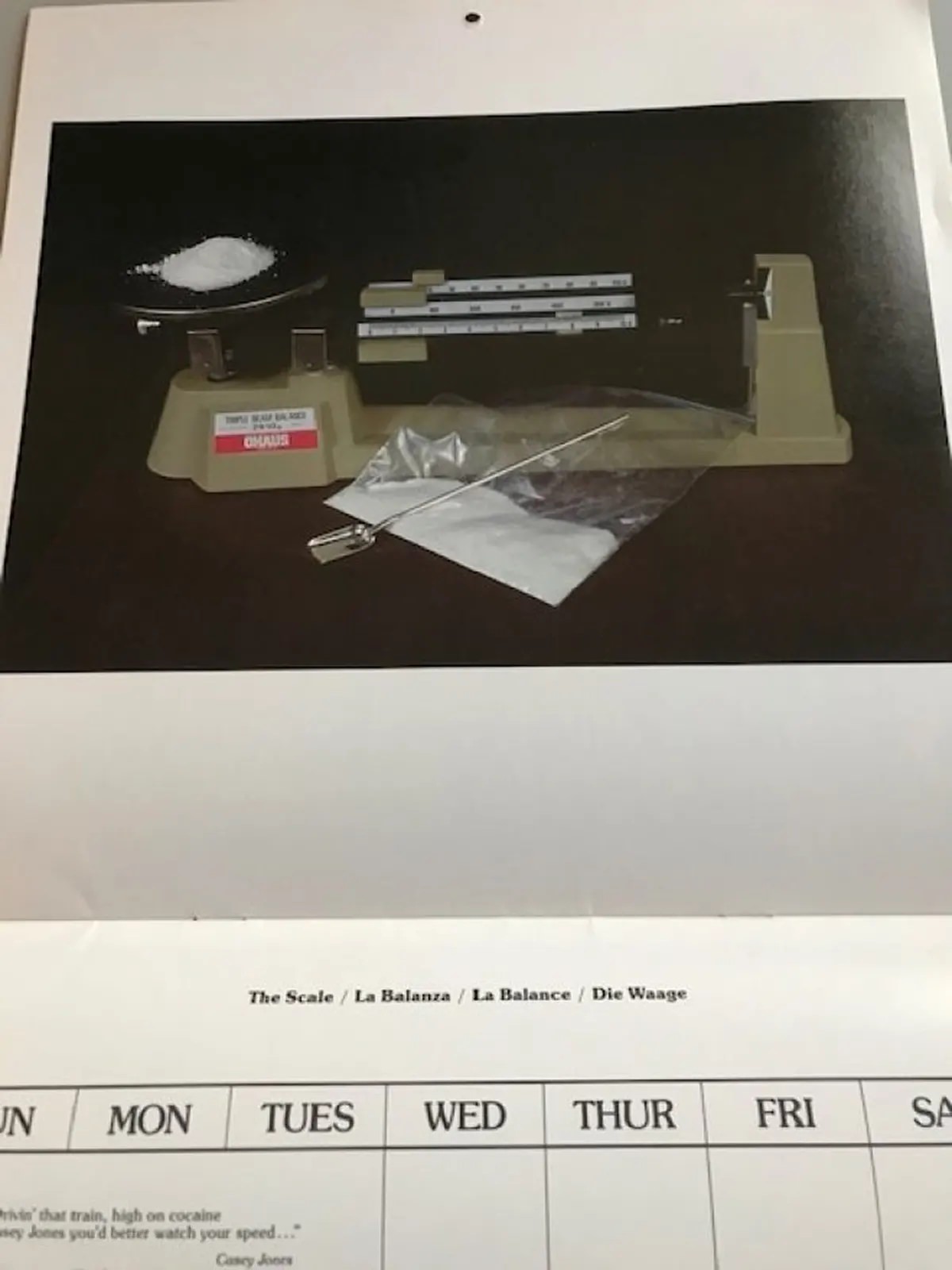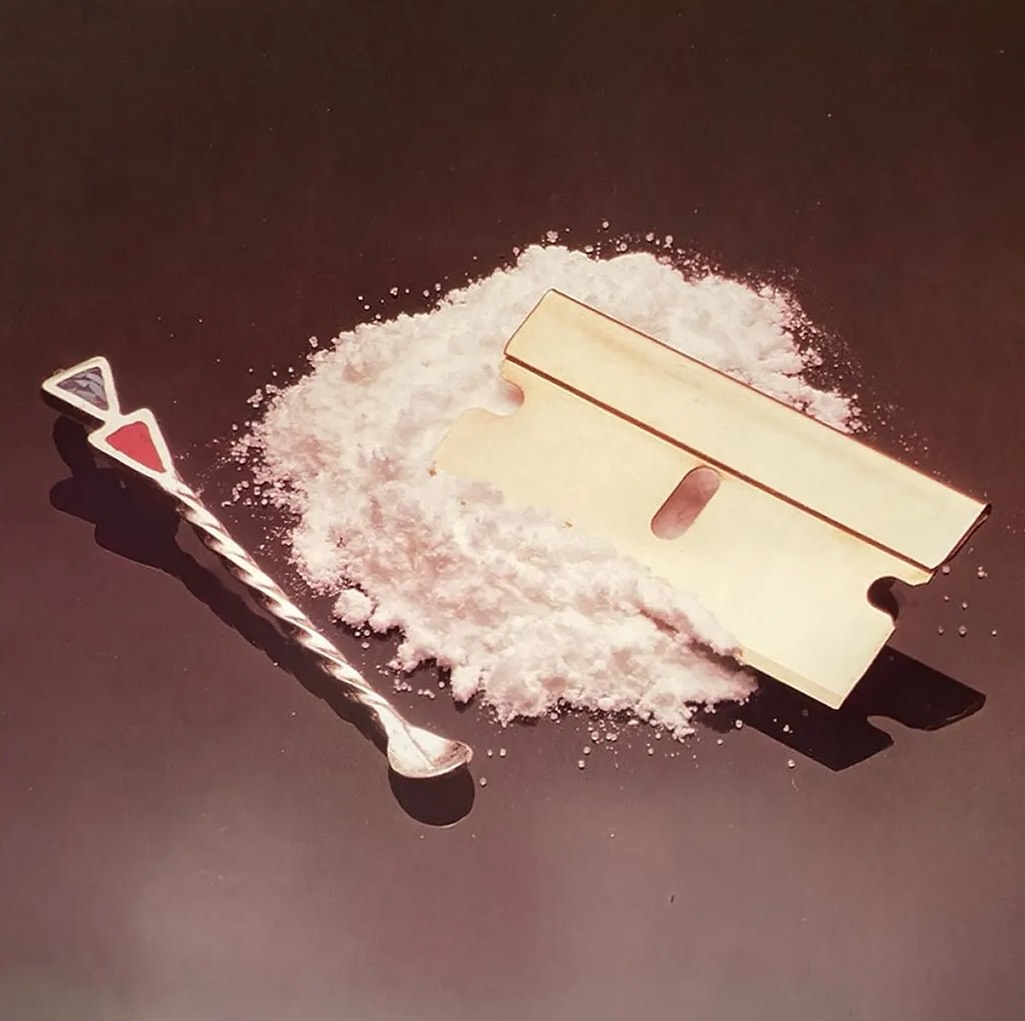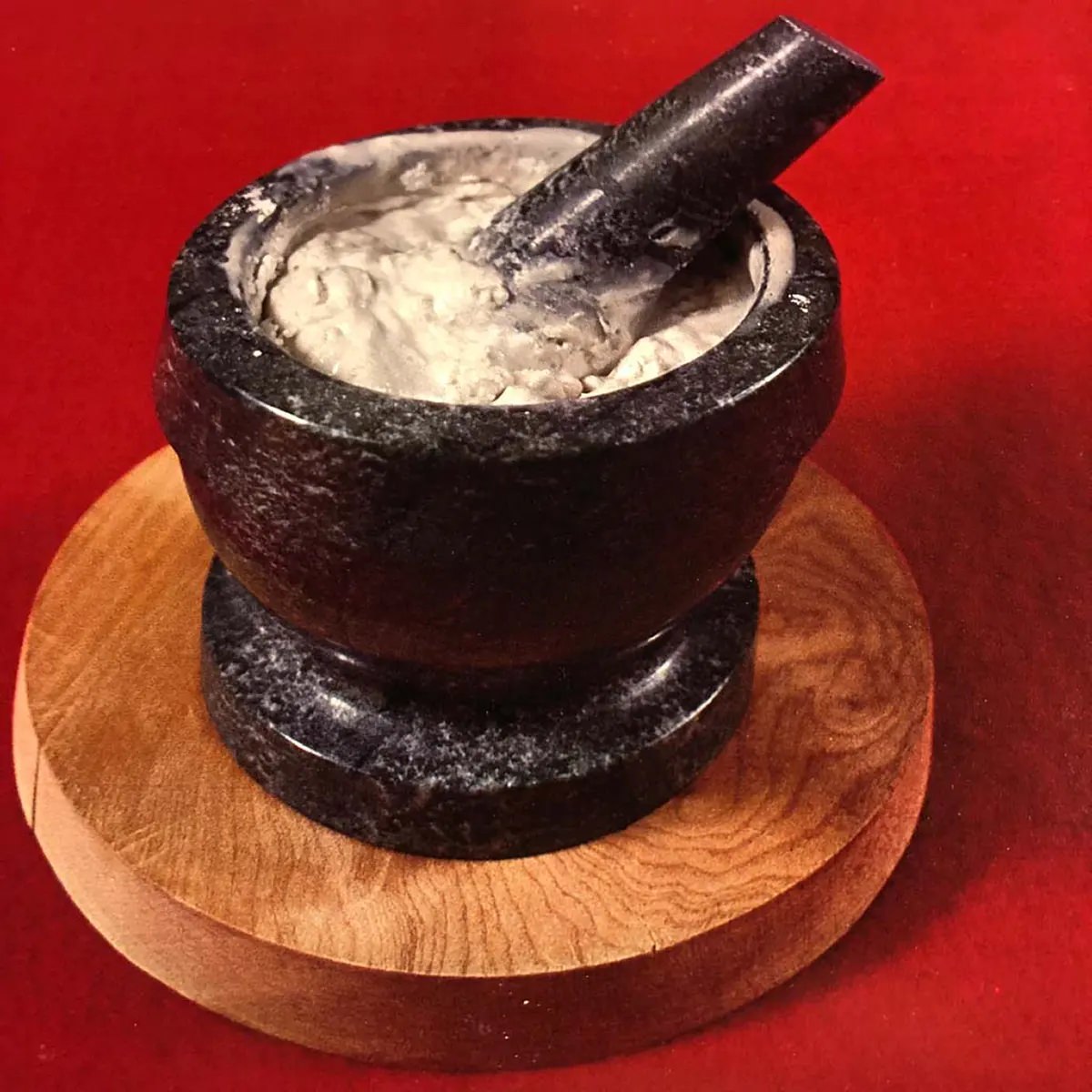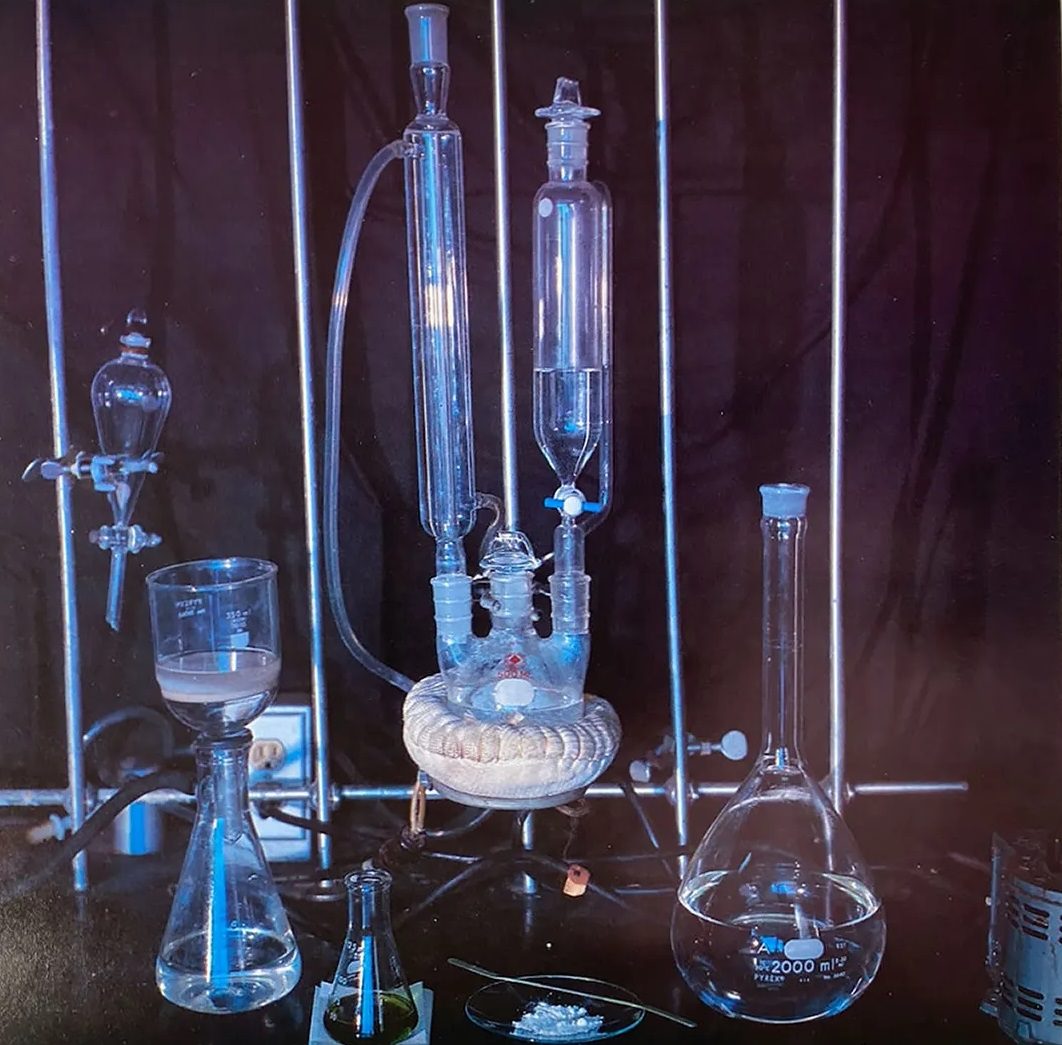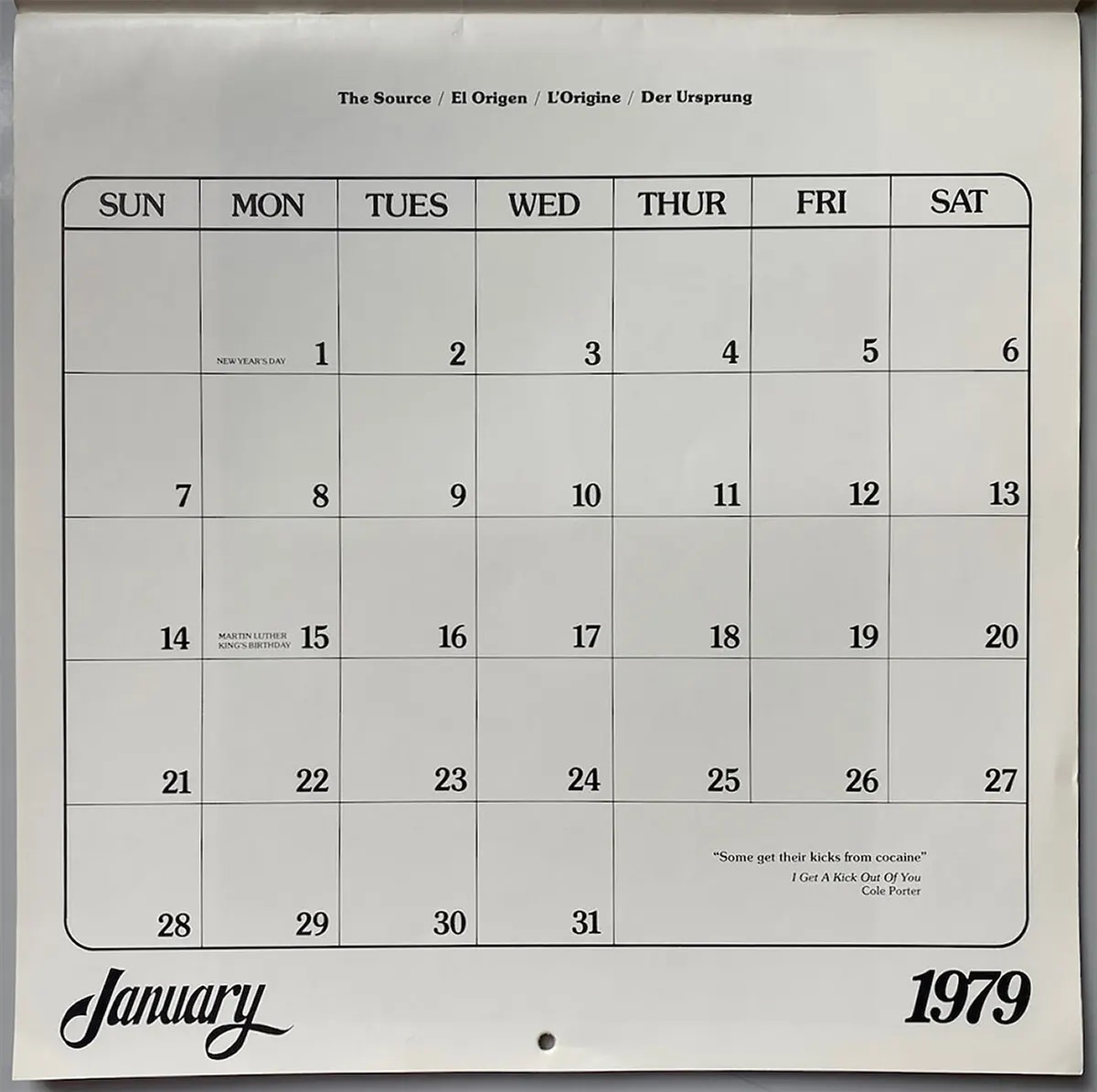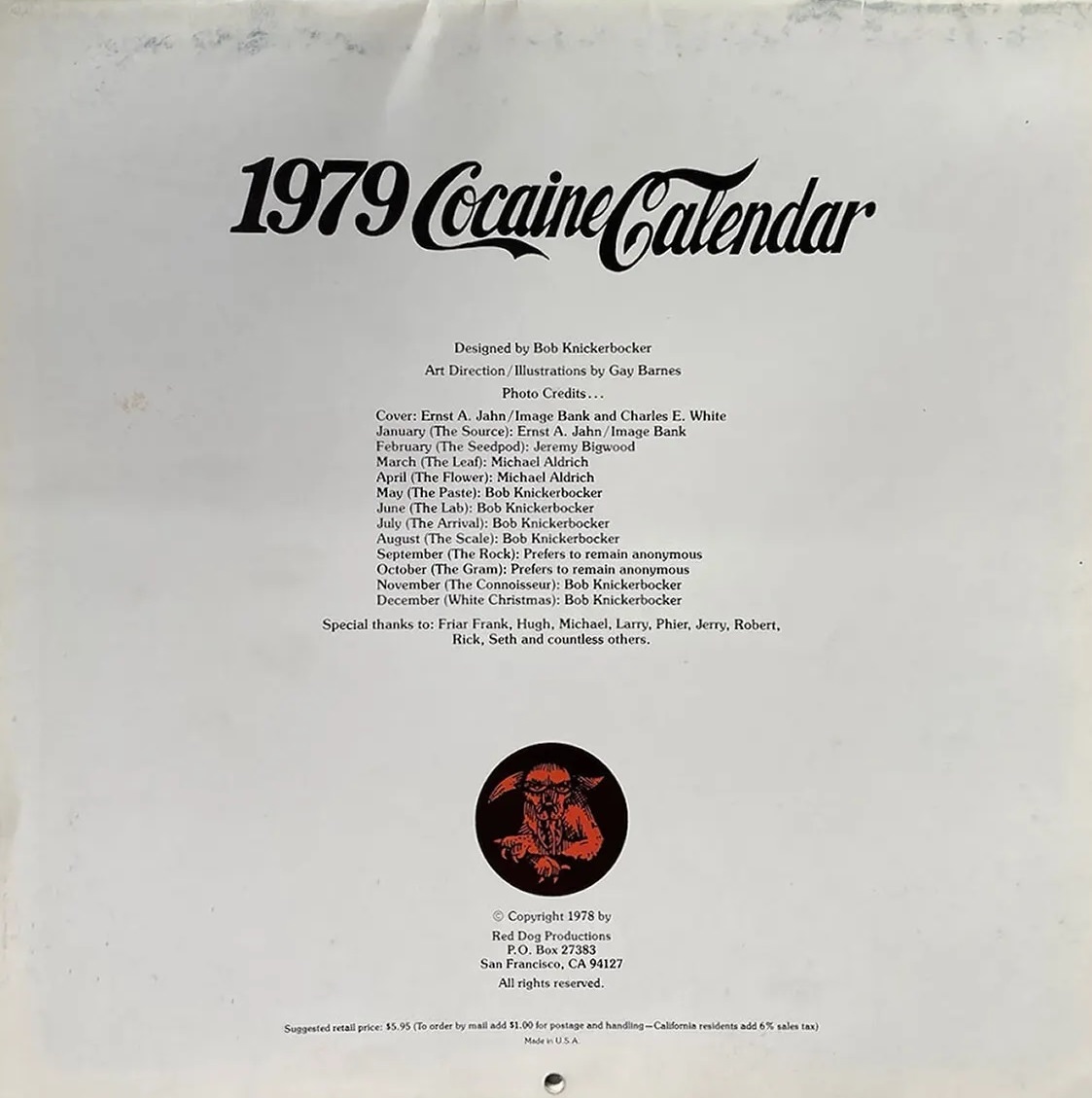Check out this weird 1979 calendar dedicated to cocaine. Even though cocaine was illegal, it wasn’t considered harmful, and some magazines advertised cocaine gadgets regularly. Each month’s photo shows the coca plant at a different stage of its transformation into cocaine powder, from its source in the Andes to its destination as a Christmas gift, as well as users enjoying it. Each month is accompanied by a quote about cocaine from a different source. Additionally, there is a Chronology of Cocaine History from 900 A.D. to 1979 on the front matter.
Red Dog Productions published the calendar in San Francisco. Just before President Reagan started the War On Drugs, the calendar dropped. At the time, cocaine was described as not physically addictive. Usually, it did not result in serious social consequences, such as crime, hospital admissions, or death, as per U.S. government reports. Drug use peaked in the 1980s after a surge in popularity in the 1970s. Cocaine was associated with celebrities, high rollers, and glamorous parties. According to Rolling Stone magazine, the decade was marked by “extreme” sexual activity, drug abuse, and rock music. According to a survey conducted by the magazine, 20 percent of respondents admitted to trying cocaine. The negative association between race and cocaine began to erode as the Civil Rights movement won victory for black Americans. Rock stars and celebrities used cocaine to have unbridled fun, stay up all night, and be part of a scene that was irresistibly decadent and attractive, making it the ultimate social lubricant.
However, cocaine couldn’t keep up with the rabid demand among the social elite. Cocaine manufacturers faced the peculiar problem of not having enough of the drug at the end of the 1980s. Suppliers used simple baking soda to dilute the powdered, pure cocaine, making it cheaper to produce and buy. The new, dirtier form of cocaine was no longer only accessible to the wealthy and famous; even the poor and disenfranchised could purchase it. Crack cocaine, freebase cocaine, or “crack,” is created by heating cocaine until it cracks. The popularity of crack cocaine skyrocketed after it hit the market. In 1985 and 1986, when inner cities and gangs started to distribute crack cocaine, hospitalizations for medical emergencies caused by this drug increased by over 100 percent.


